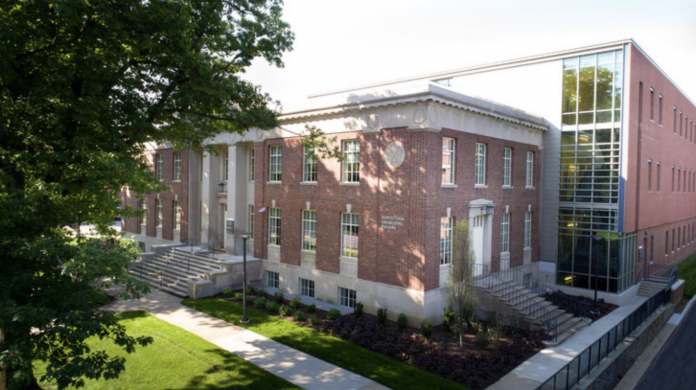
UNIVERSITY PARK, Pa. — A ribbon-cutting ceremony was held June 8 to mark the official opening of Penn State’s rebuilt and renovated Agricultural Engineering Building, which houses the Department of Agricultural and Biological Engineering (ABE) in the College of Agricultural Sciences.
The recently completed $44 million project resulted in a 93,500-square-foot building containing new research and teaching laboratories, classrooms, collaborative teaching/learning spaces, a senior capstone project design lab, offices, a green roof, and a state-of-the-art shared fermentation facility.
The building was designed by EYP, an architecture and engineering firm with offices throughout the U.S. and Europe.
The project was the first at Penn State to use the “integrated project delivery” approach, which brings together owners, contractors and designers to foster collaboration and capitalize on available expertise.
The original building, constructed in 1938 with a large addition completed in 1968, was designed by Charles Klauder, one of the leading collegiate Gothic architects of his time.
The building has needed significant upgrades to meet energy and safety standards as well as the evolving needs of the department, faculty, students and collaborators across the University.
It retains much of the character of the original Klauder design, blending the old with the new.
Ceremony
Rick Roush, dean of the College of Agricultural Sciences, presided over the 11 a.m. ceremony, which also included remarks by Penn State trustee and ABE alumnus Keith Masser, professor and head of agricultural and biological engineering Paul Heinemann and Vice President for Development and Alumni Relations O. Richard Bundy III.
The ceremony provided an opportunity to recognize representatives from CSL Behring, which made a $4.92 million gift to help fund the shared fermentation facility.
The facility will focus on workforce development and foster interdisciplinary research with the Huck Institutes of the Life Sciences at Penn State, other colleges and institutes, and industry partners.
Penn State officials also acknowledged representatives from Germany-based Sartorius Stedim Biotech, which donated equipment for the shared fermentation facility.
These gifts and more are part of “A Greater Penn State for 21st Century Excellence,” the University’s fast-paced, $1.6 billion campaign.
New facility
“Facilities rarely make or break a faculty member’s career,” said Albert Jarrett, a three-time Penn State ag engineering alumnus and professor emeritus of agricultural engineering.
“But when your facilities are 80 years old, having been built in 1937 when tillage, baling and combining were important agricultural engineering research topics, it is nice — and important — to see the completion of modern teaching, research and extension facilities that will serve this department and its students for the next 80 years.”
The new amenities are expected to help attract top faculty members and students to the ABE department, which has programs in natural resource engineering and management, biological process engineering and bioproducts, and agricultural engineering and production.
Faculty members already have begun moving into their new spaces; the first classes in the renovated building will take place this fall.









